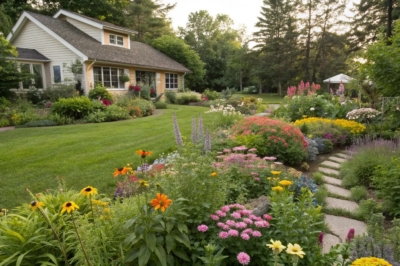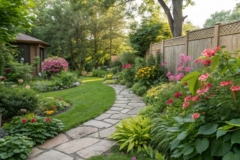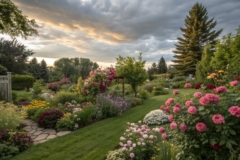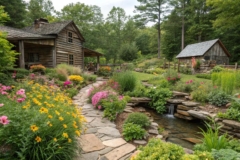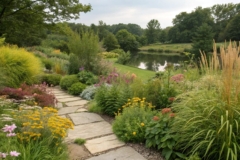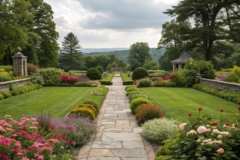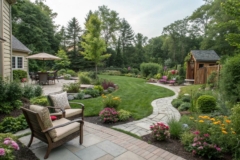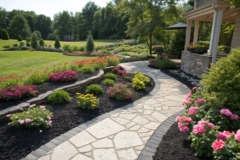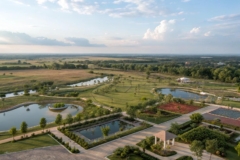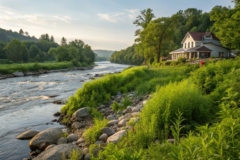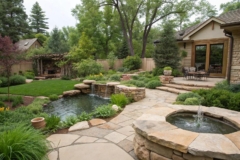1. Layered Planting for Depth

Creating a layered look with different plant heights adds depth and interest. I often mix ornamental grasses with taller shrubs for a dynamic landscape.
Possibly helpful picks:
- Ornamental Grass Seeds: Enhance garden texture with tall ornamental grasses for a lush, layered effect.
- Tall Shrub Varieties: Add height and structure to your garden with diverse, easy-to-grow tall shrubs.
- Garden Edging Stones: Define garden layers seamlessly with durable, stylish edging stones.
2. Incorporating Water Features
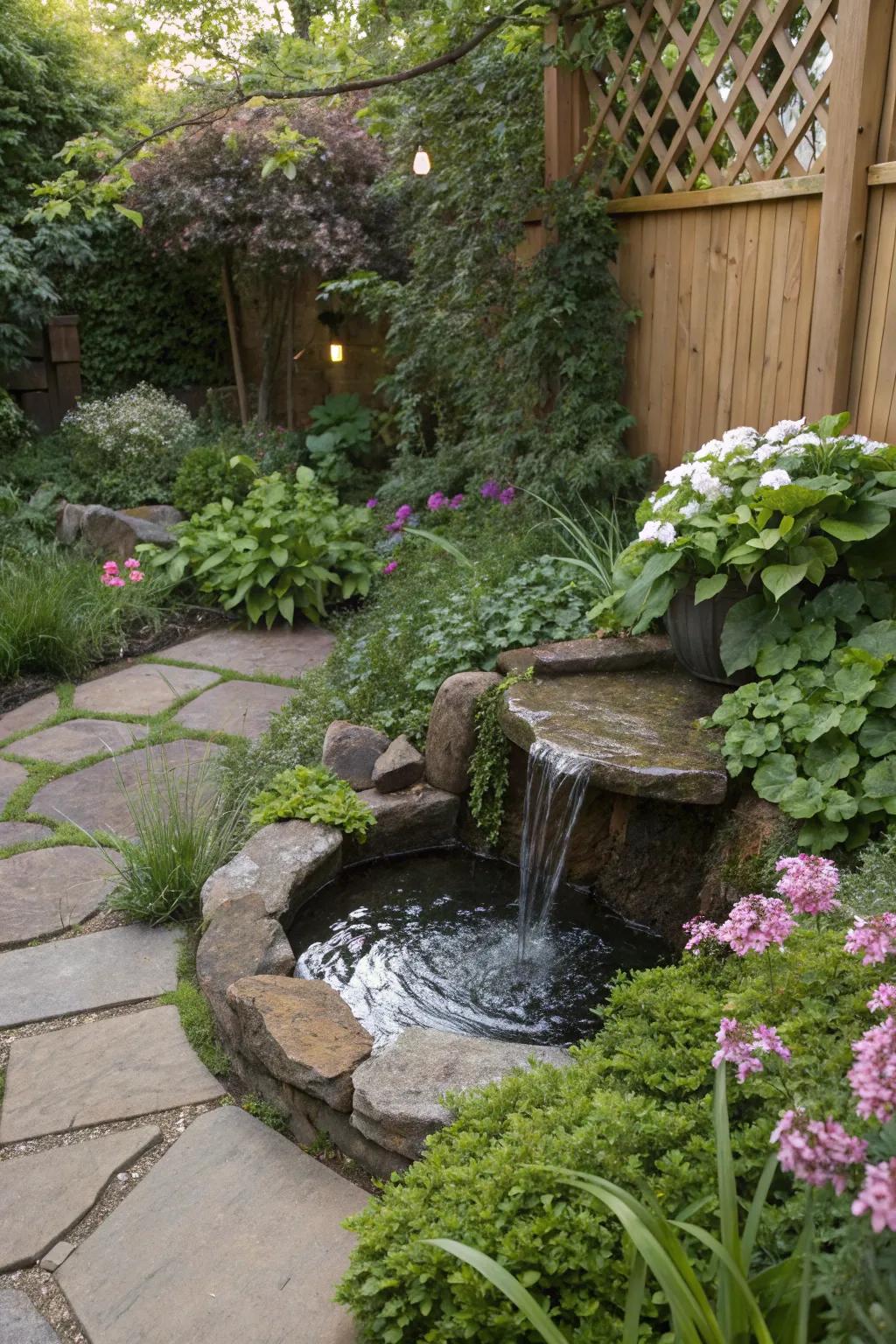
A small water feature can add tranquility and attract wildlife. The gentle sound of water in my garden is the perfect backdrop for relaxation.
A few helpful options:
- Solar-Powered Water Fountain Pump: Enhance your garden with a solar water pump. No wiring needed, eco-friendly, and tranquil.
- Natural Stone Waterfall Kit: Create a serene atmosphere with a natural stone waterfall. Easy installation for any garden.
- Submersible LED Fountain Lights: Transform your water feature with colorful LED lights. Safe and waterproof for stunning effects.
3. Creating Privacy with Tall Grasses
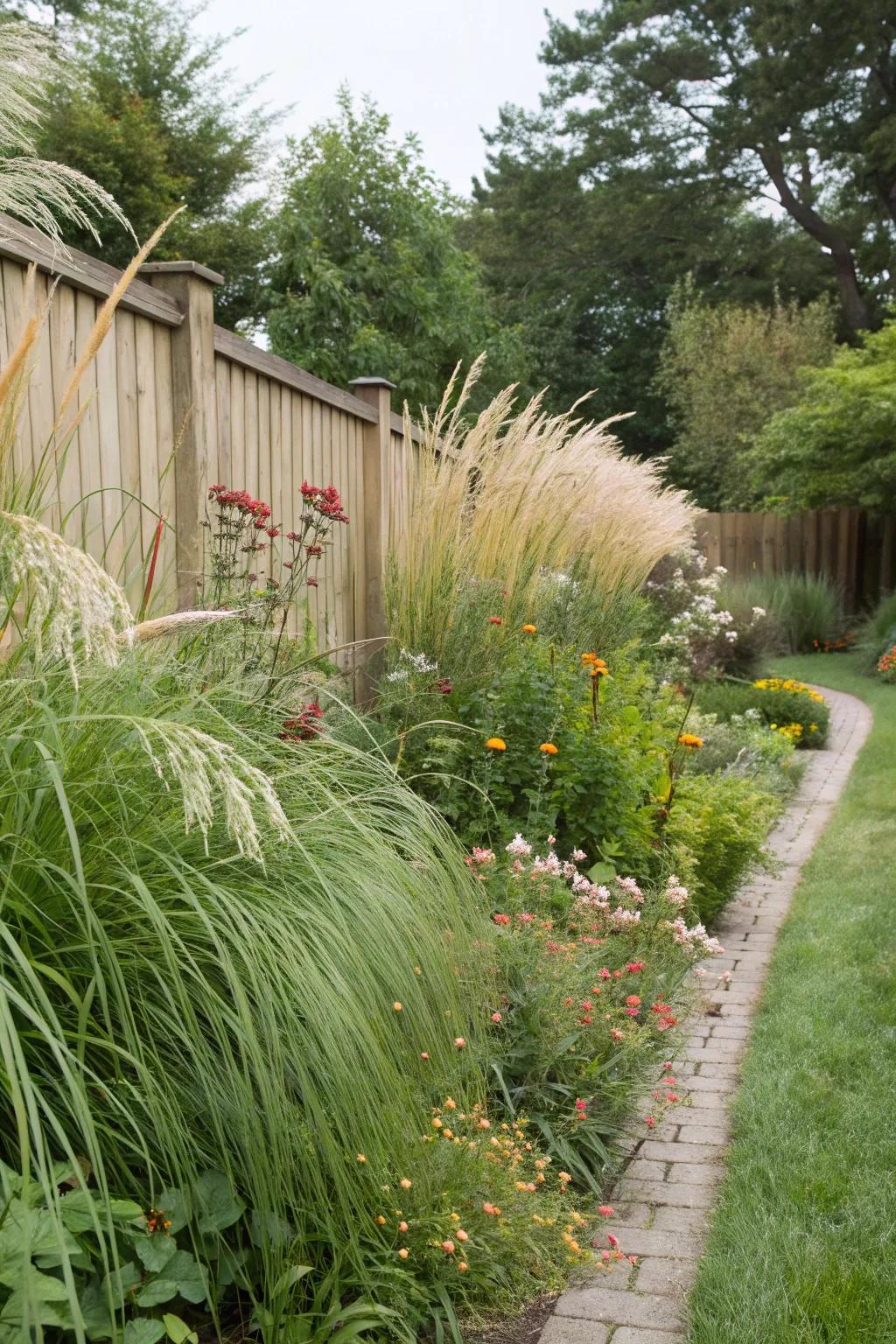
Tall ornamental grasses can provide natural privacy. They sway beautifully in the breeze, creating a serene and private space.
These products might be useful:
- Ornamental Grass Seeds: Transform your garden into a private oasis with easy-to-grow ornamental grass seeds.
- Garden Edging Panels: Define your landscaping with stylish edging panels, complementing your tall grasses beautifully.
- Garden Soil Mix: Boost your ornamental grass growth with nutrient-rich garden soil mix for flourishing results.
4. Natural Stone Pathways
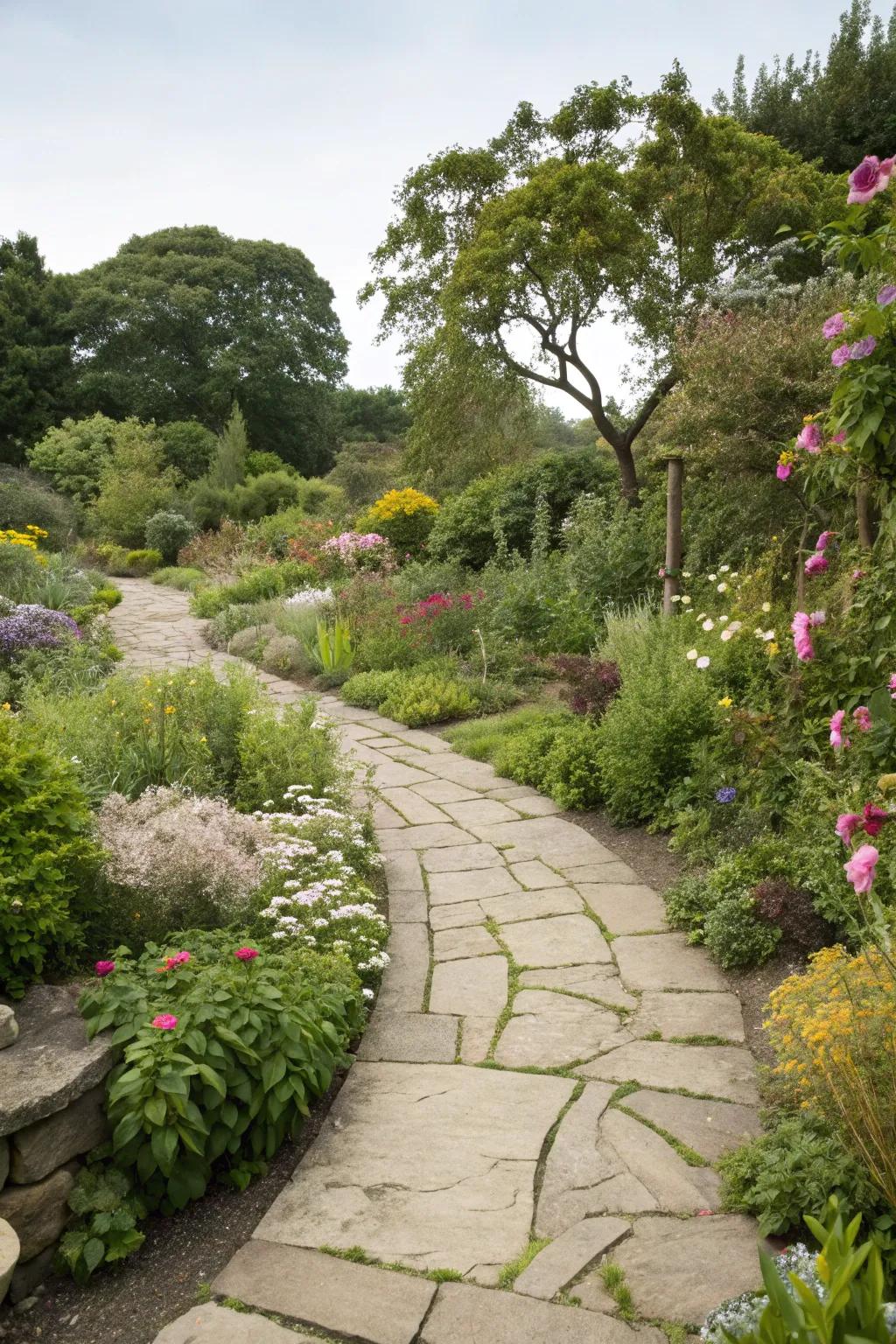
Consider adding stone pathways to guide visitors through your garden. I adore the rustic charm these paths bring, making every stroll feel like a mini adventure.
Give these a look:
- Natural Stone Stepping Stones: Enhance your garden with rustic stepping stones that create inviting pathways for exploration.
- Garden Pathway Edging Kit: Define your stone pathway with an easy-to-install edging kit for a neat, polished look.
- Landscaping Fabric and Pins Set: Secure your stone pathway with durable fabric and pins, preventing weed growth and erosion.
5. Colorful Perennial Flower Beds
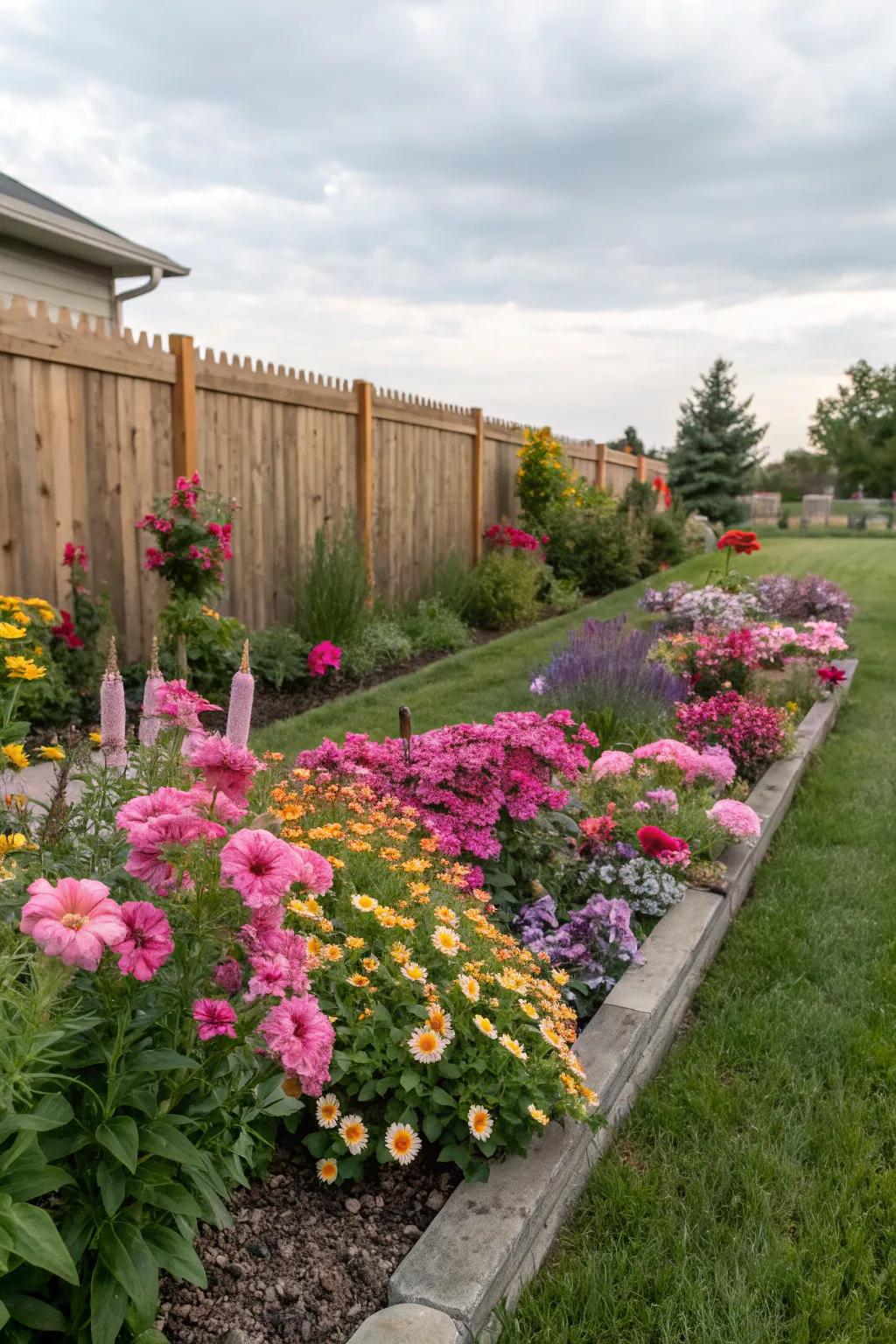
Incorporating perennial flowers like Salvias and Daisies can bring bursts of color to your garden. I love how these flowers revive my space every spring with minimal effort.
You might give these a try:
- Perennial Flower Seed Mix: Revitalize your garden every spring with a diverse mix of lasting perennial flowers.
- Garden Bed Edging: Enhance garden aesthetics with durable edging for a neat, refined flower bed appearance.
- Organic Plant Fertilizer: Boost flower growth naturally with organic fertilizer, ensuring vibrant blooms throughout the season.
6. Creating Defined Edges

Use clear edging to separate different garden areas for a tidy look. I’ve found that well-defined edges help keep my garden looking neat and organized.
A few things you might like:
- Wooden Garden Edging Kit: Define your garden space with a classic wooden edging kit for a neat, rustic look.
- Metal Landscape Edging: Use durable metal edging to create clean lines in your garden and prevent soil spreading.
- Plastic Garden Border Panels: Add flexibility to your landscaping with easy-to-install plastic garden border panels.
7. Creating a Sensory Garden
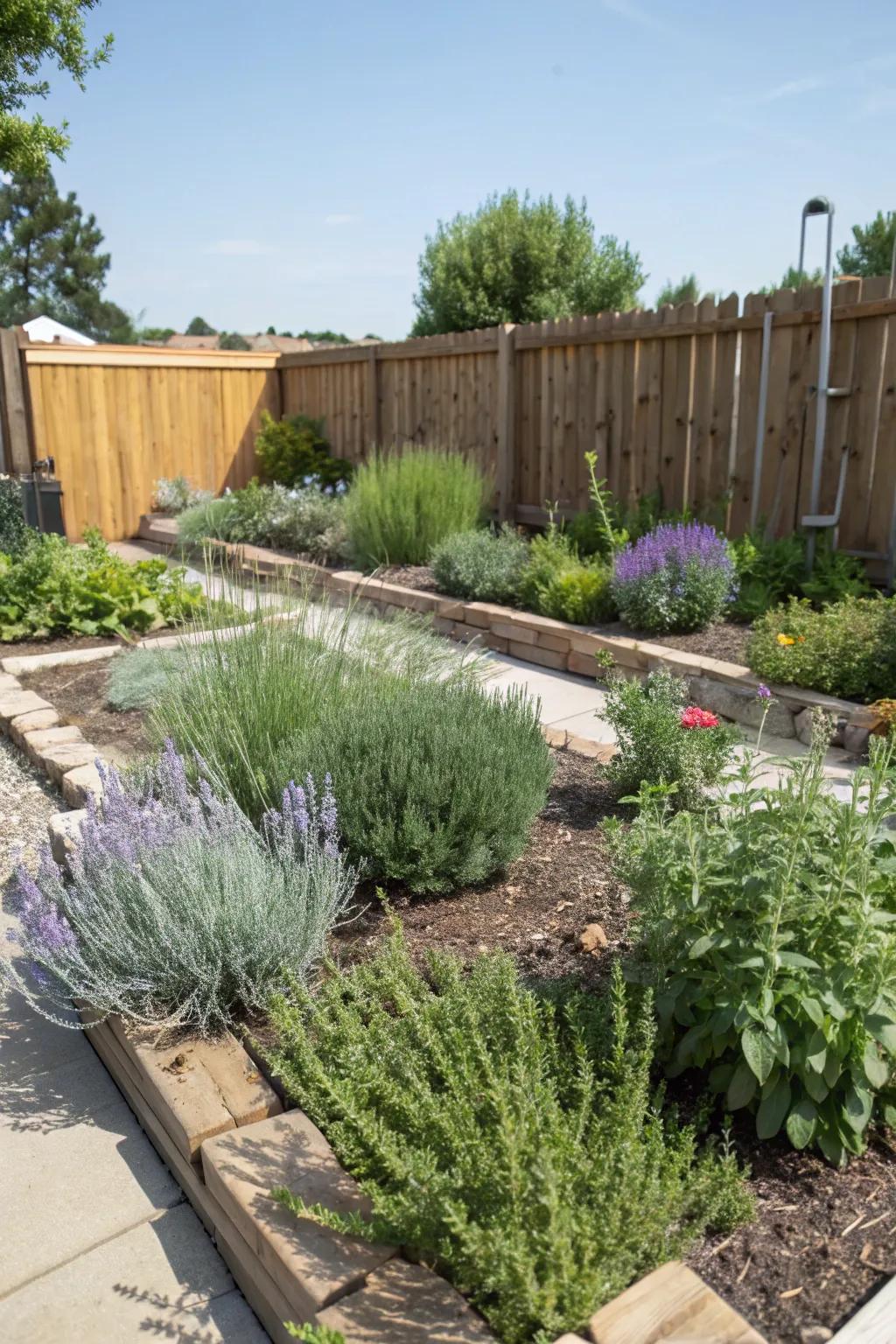
Engage all senses with a sensory garden. My mix of scented herbs and textured plants makes every visit to the garden a delightful experience.
A few relevant products:
- Assorted Herb Seed Kit: Start your sensory garden with an assortment of fragrant herbs for delightful aromas.
- Textured Plant Collection: Enhance your garden’s touch appeal with a variety of uniquely textured plants.
- Garden Solar Lights: Illuminate your sensory garden at night with eco-friendly solar lights for charm and safety.
8. Seasonal Interest with Evergreens
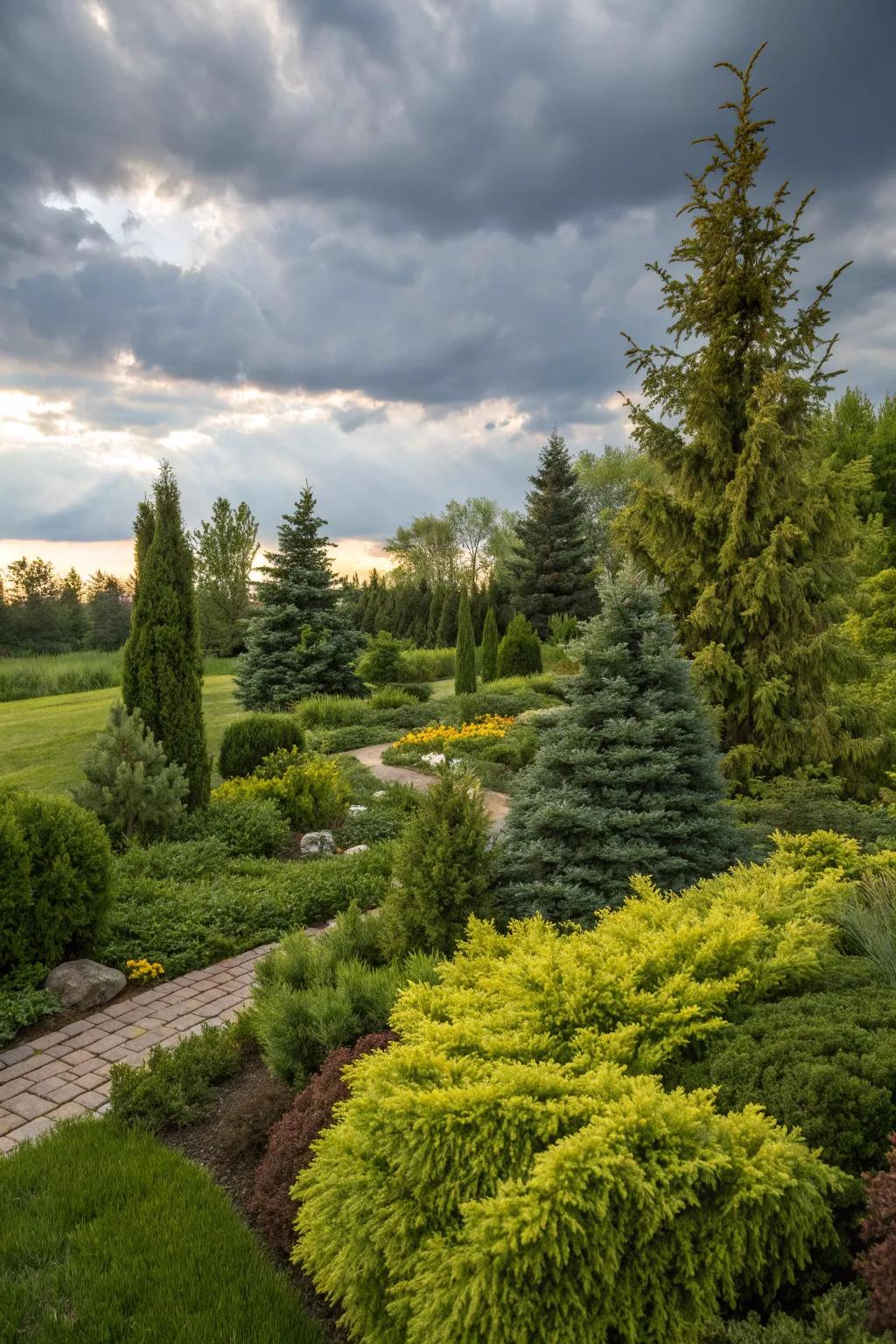
Adding evergreens ensures your garden remains lively even in winter. My evergreens are my winter heroes, keeping the garden beautiful while everything else sleeps.
Try these:
- Evergreen Shrub Fertilizer: Enhance your evergreens’ growth and color with this easy-to-use, nutrient-rich fertilizer.
- Pruning Shears for Evergreens: Maintain perfect evergreen shapes with these durable, sharp pruning shears designed for precision trimming.
- Mulch for Evergreen Gardens: Protect your evergreens and retain soil moisture with this high-quality, long-lasting mulch.
9. Including Hardy Shrubs
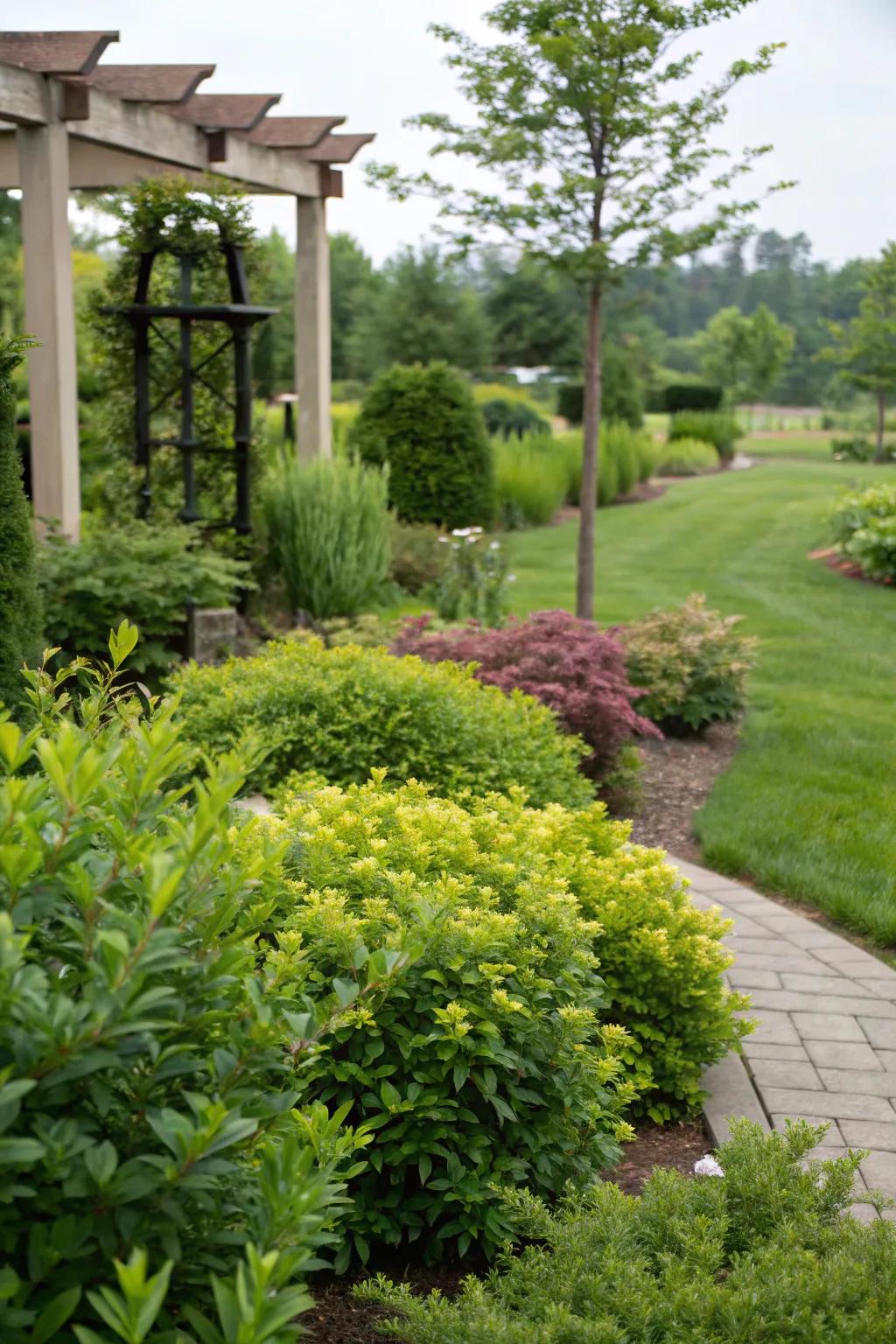
Planting hardy shrubs like Viburnums gives structure and interest to your garden. They’re my go-to for adding lush greenery that withstands the winter chill.
You might like:
- Garden Trellis for Climbing Plants: Enhance your garden’s vertical space with a durable trellis, supporting hardy shrubs beautifully.
- Outdoor Garden Pergola Kit: Create a stunning focal point with a pergola, perfect for integrating with hardy shrubs.
- Decorative Garden Edging Border: Define your shrub areas elegantly using flexible, easy-to-install decorative garden edging.
10. Incorporating Fruit Trees
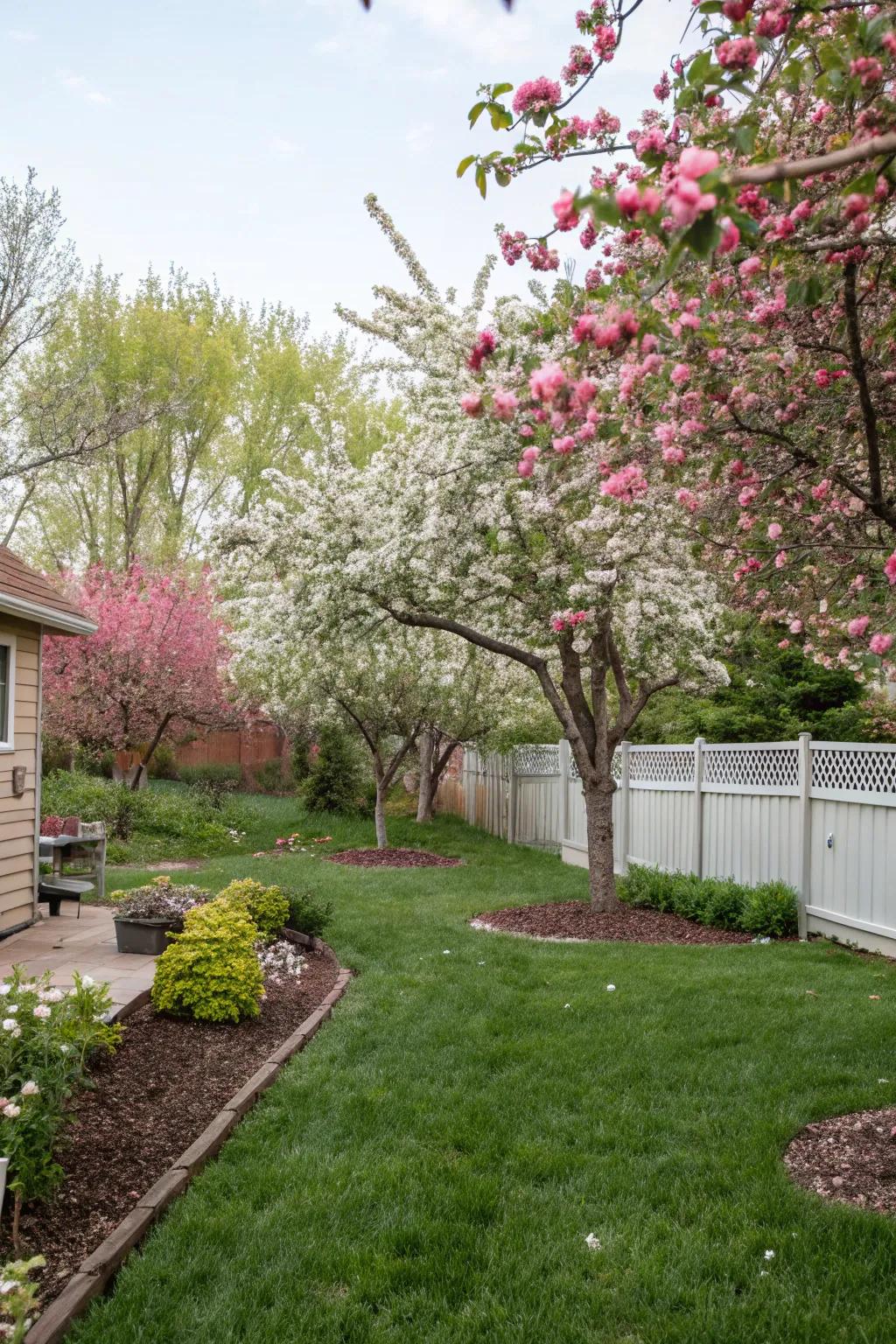
Integrate fruit trees for beauty and bounty. My apple trees not only add charm but also offer delicious harvests come fall.
Consider these options:
- Apple Tree Starter Kit: Start your own apple orchard with this easy-to-use apple tree starter kit.
- Fruit Tree Fertilizer: Enhance fruit tree growth with this specially formulated fertilizer for a rich harvest.
- Tree Pruning Shears: Maintain your fruit trees with precision using durable, sharp pruning shears.
11. Using Recycled Materials
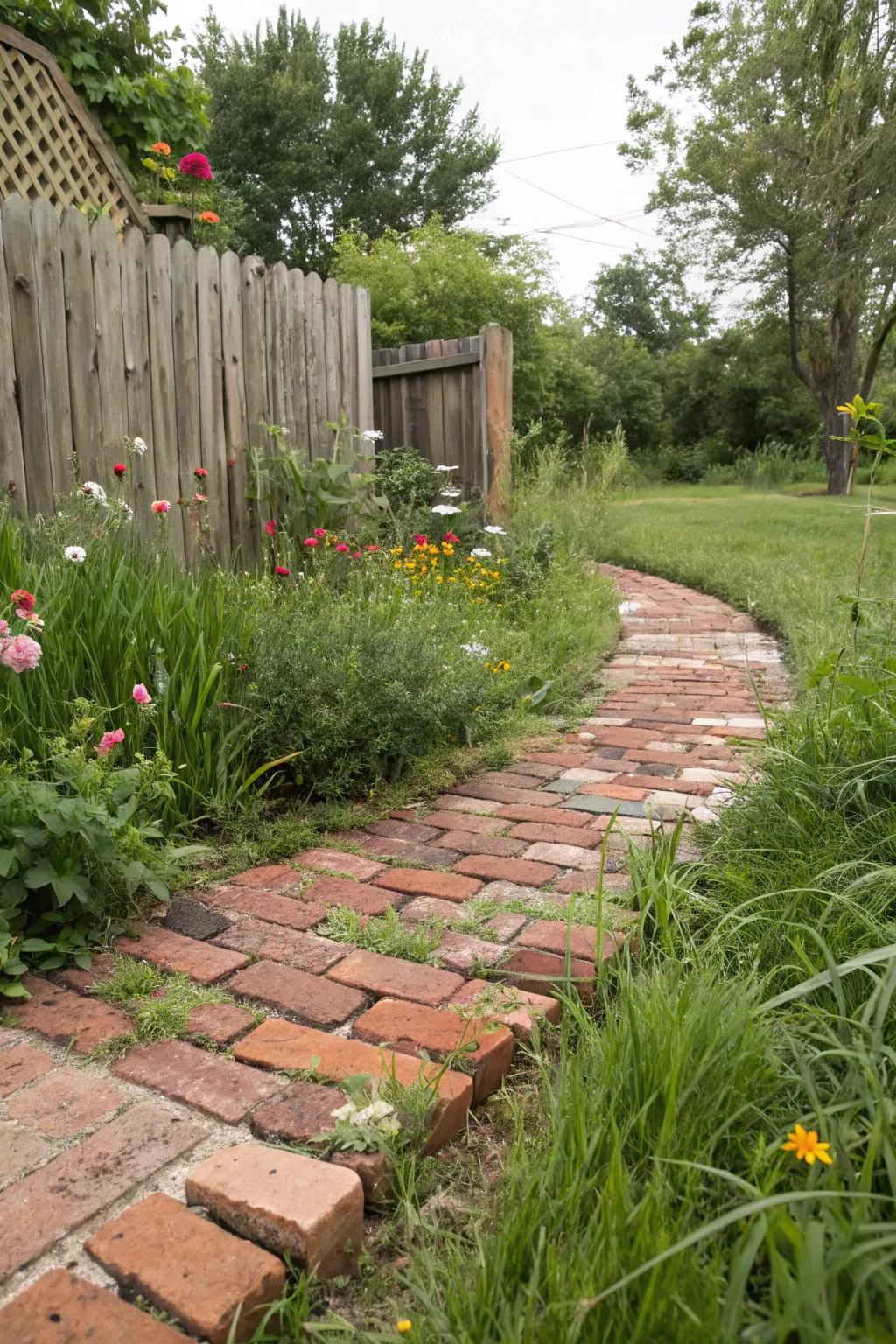
Consider using recycled materials for garden features. I turned old bricks into a charming pathway, blending sustainability with style.
Items that may come in handy:
- Reclaimed Brick Set: Enhance your garden with a rustic brick path using these eco-friendly reclaimed bricks.
- Garden Pathway Mold: Create unique pathways by pouring concrete into this reusable mold, mimicking vintage brick patterns.
- Recycled Rubber Garden Edging: Define your garden path with durable, recycled rubber edging that bends to any shape.
12. Crafting a Moon Garden
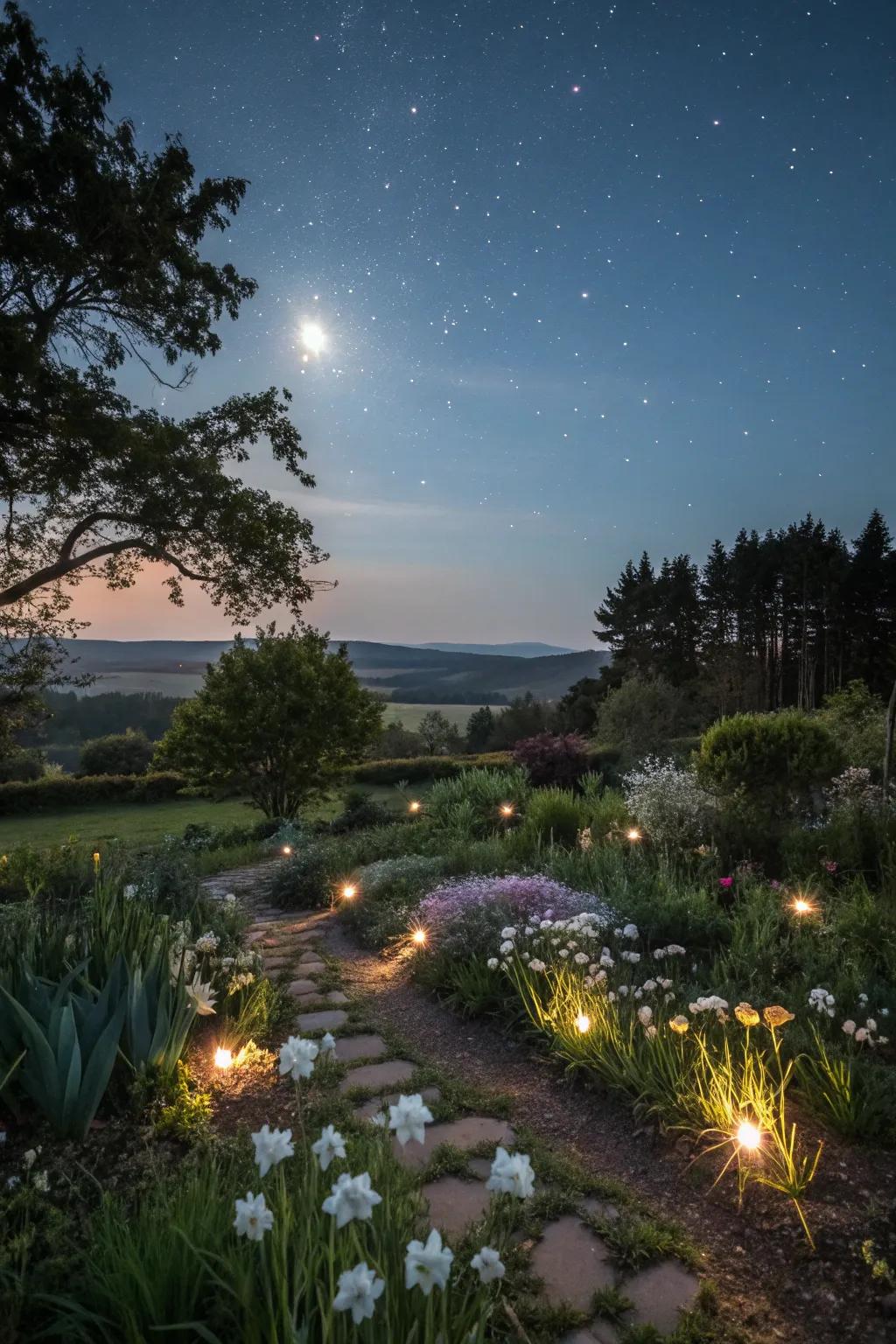
Design a moon garden with plants that glow under moonlight. My evening strolls are magical thanks to the silvery leaves and white blooms.
Useful items to consider:
- Solar Garden Pathway Lights: Illuminate your moon garden pathways beautifully and sustainably with solar-powered garden lights.
- White Blooming Perennial Plants: Enhance your garden’s nighttime allure with perennial plants that feature glowing white blooms.
- Reflective Garden Ornaments: Add magical reflections to your garden with ornaments that capture and reflect moonlight.
13. Using Native Plants
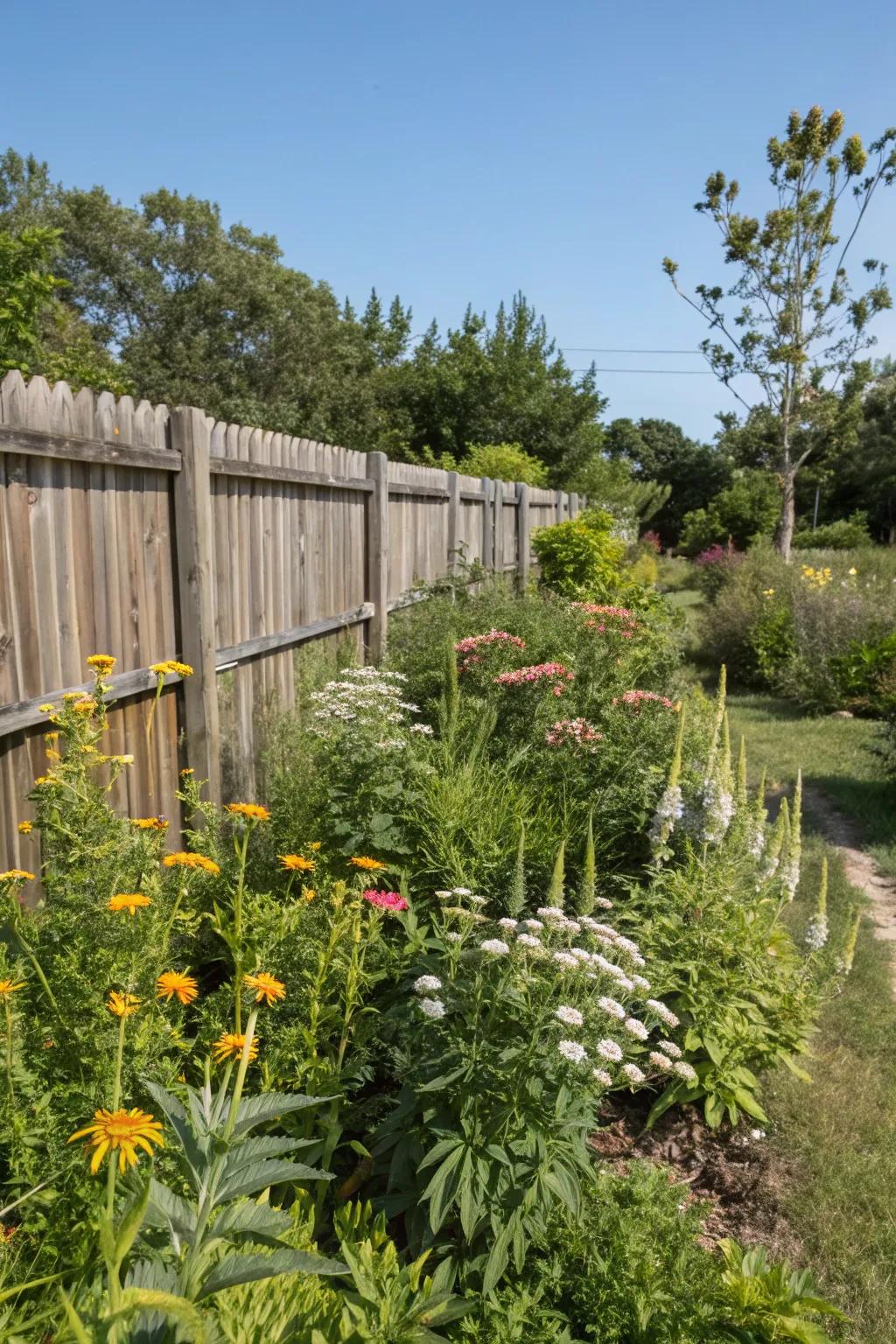
Plant native species for a low-maintenance garden. Native plants in my garden seem to thrive with less fuss and add a natural touch.
These products might help:
- Native Plant Seed Mix: Attract local wildlife and enrich your garden with easy-to-grow native plant seeds.
- Garden Mulch for Native Plants: Protect your native plants and retain soil moisture with this eco-friendly garden mulch.
- Organic Fertilizer for Native Species: Boost the growth of your native garden with a gentle, organic fertilizer.
14. Incorporating Garden Art

Add some garden art to reflect your personality. I’ve sprinkled whimsical sculptures throughout my garden for a personal touch.
May just do the trick:
- Whimsical Garden Sculptures: Add personality with whimsical sculptures to create a unique and enchanting garden atmosphere.
- Decorative Birdhouses: Enhance your garden charm with decorative birdhouses, offering both style and function beautifully.
- Garden Fairy Statues: Invite magic to your garden with charming fairy statues to delight both kids and adults.
15. Zen Spaces for Serenity
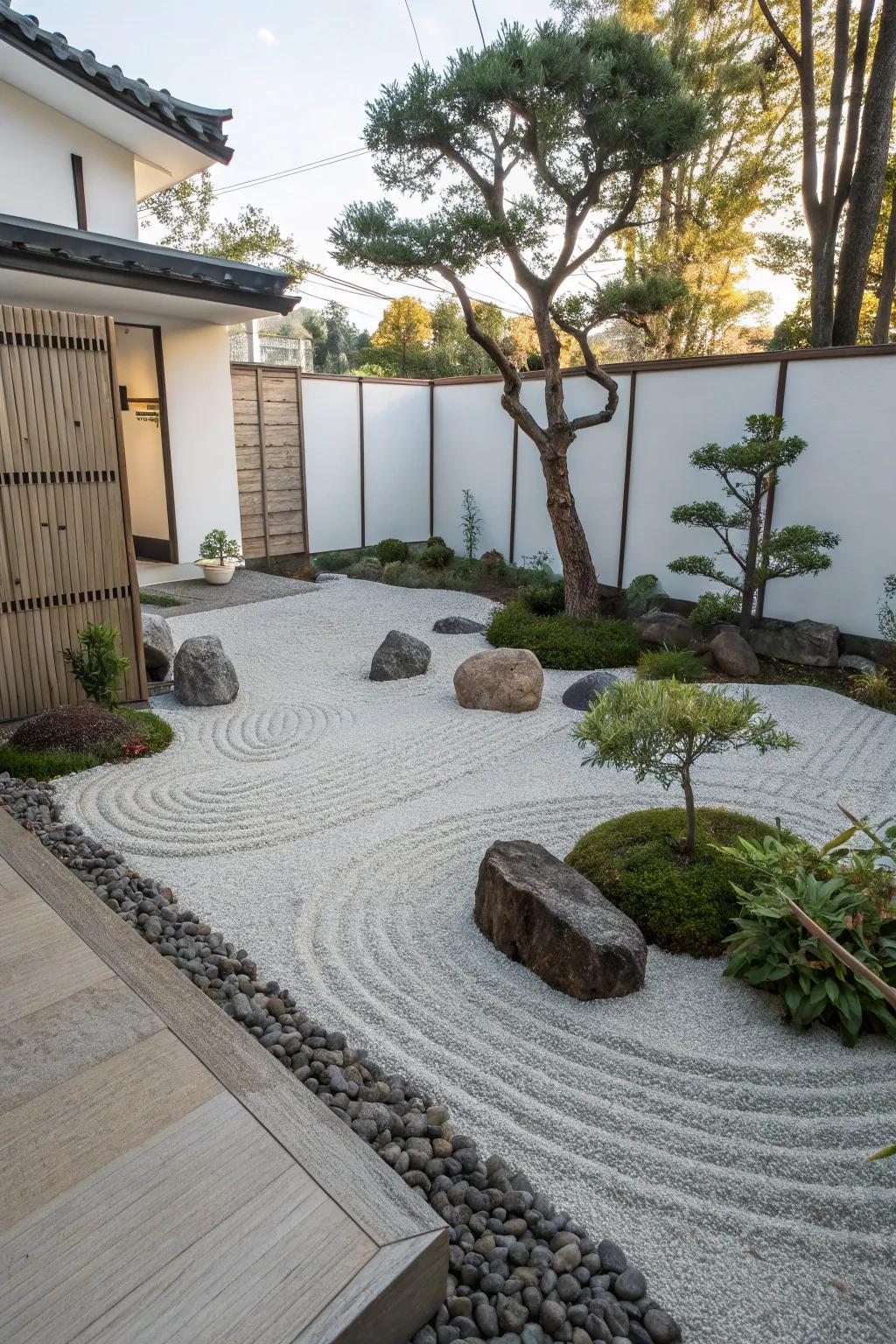
Create a Zen garden area for peace and reflection. I’ve carved out a small corner with gravel and a few choice stones for a meditative retreat.
Check if these fit your needs:
- Japanese Zen Garden Stone Set: Enhance your peaceful space with authentic stones for a perfect meditative retreat.
- Zen Garden Rake Kit: Craft and maintain calming patterns in your gravel with this elegant rake kit.
- Miniature Bamboo Fountain: Add soothing water sounds to your garden for ultimate tranquility and relaxation.
16. Mixing Modern and Rustic Elements
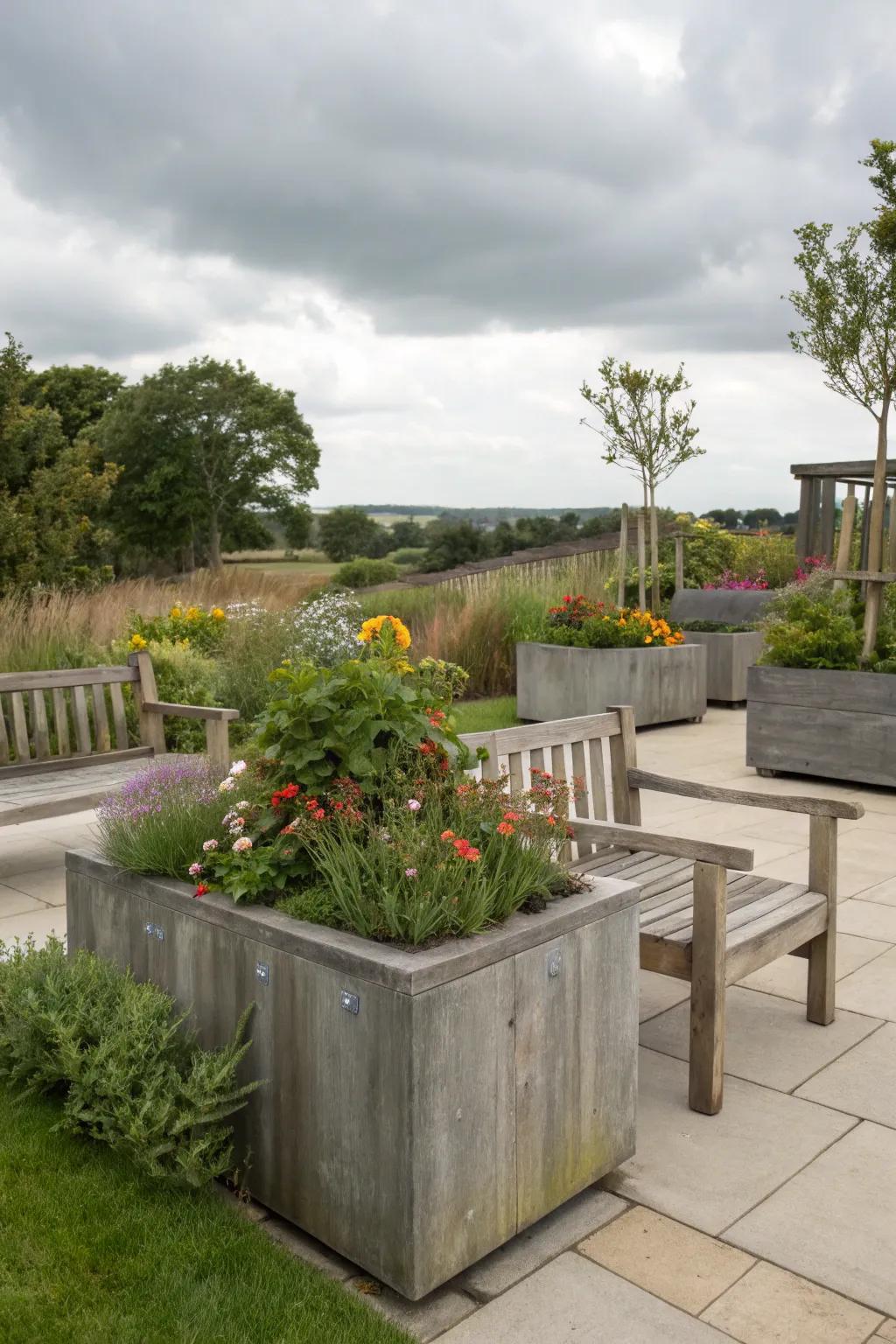
Blend modern and rustic elements to create unique garden aesthetics. I love pairing sleek planters with rustic wooden benches for a balanced look.
Maybe worth checking out:
- Sleek Metal Planters: Enhance your garden with sleek metal planters for a contemporary touch. Perfect for modern aesthetics.
- Rustic Wooden Benches: Add warmth to your garden with rustic wooden benches, offering comfort and natural appeal.
- Outdoor Patio Symmetrical Tiles: Create a polished look with outdoor tiles, combining symmetry with style for your patio.
17. DIY Raised Garden Beds
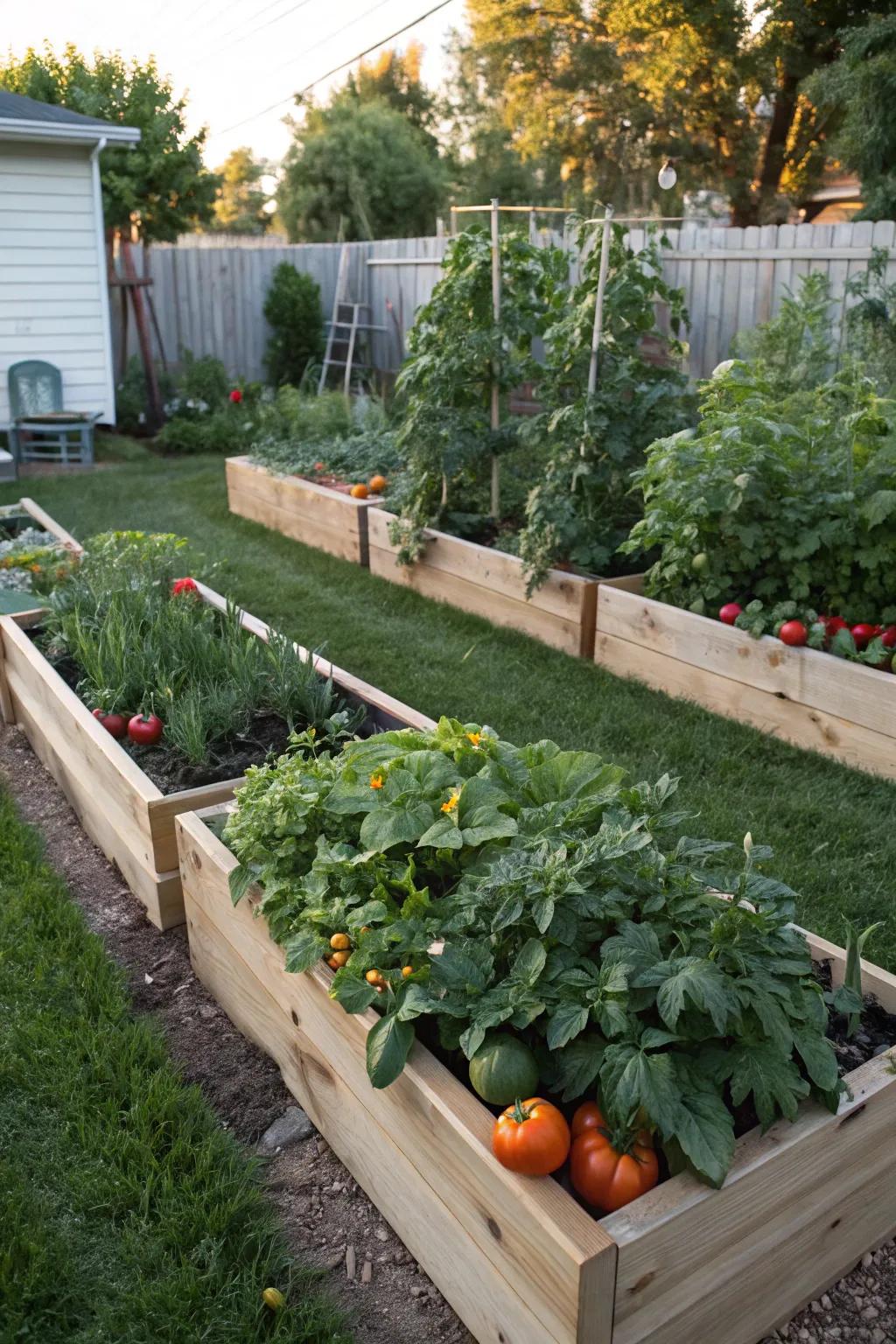
Build raised beds for easy and efficient gardening. My DIY raised beds make planting veggies a breeze and keep my back happy.
Some ideas to consider:
- Cedar Wood Raised Garden Bed Kit: Assemble a durable and natural-looking garden bed with ease using this cedar wood kit.
- Galvanized Steel Raised Garden Bed: Enhance your garden’s resilience with a sturdy galvanized steel raised bed, ideal for all seasons.
- Self-Watering Planter Insert: Reduce watering frequency by using these efficient self-watering inserts for your raised beds.
18. Surprising Vertical Gardens
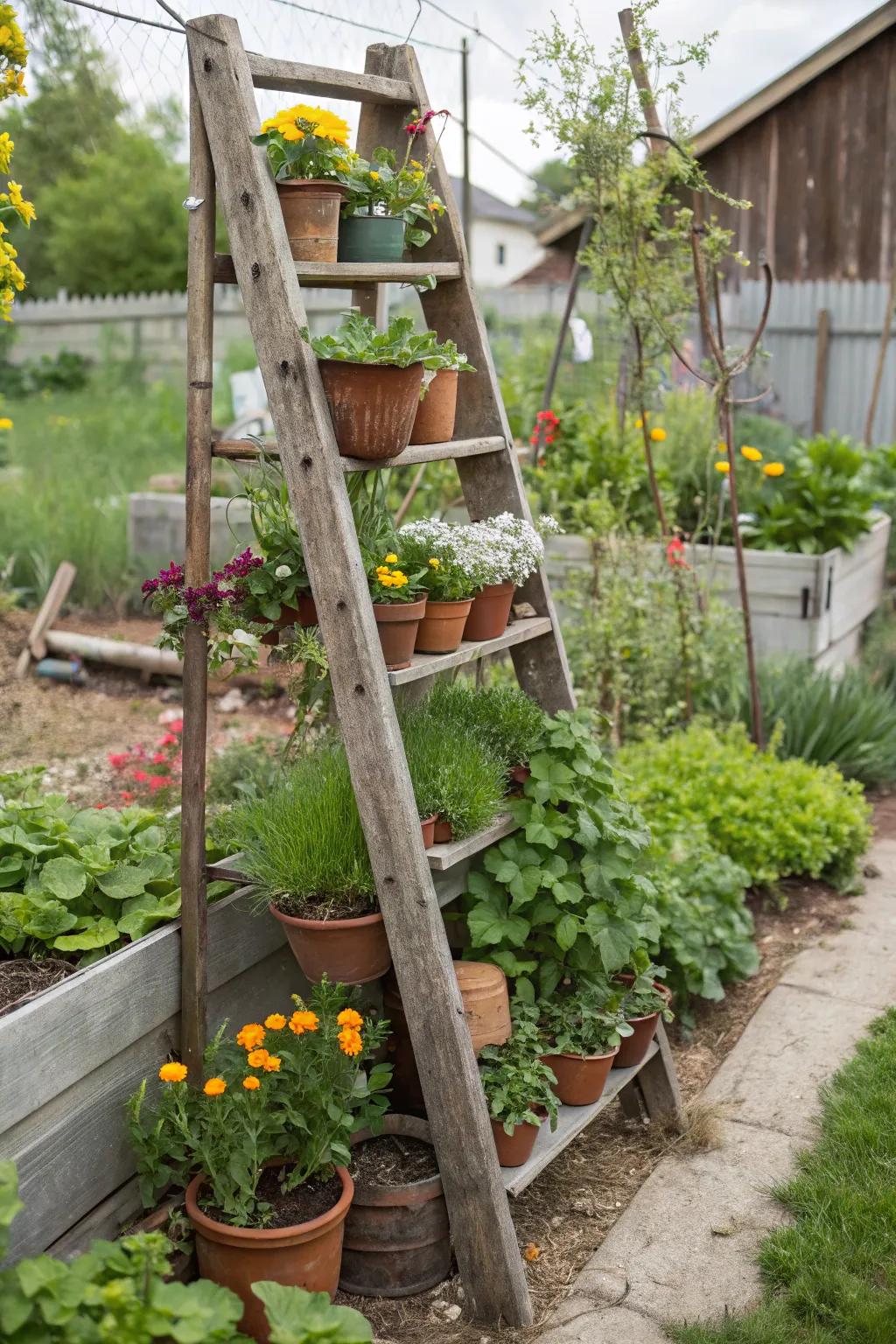
Try a vertical garden to make the most of limited space. I used an old ladder for mine, and now it’s a stunning focal point in my backyard.
Some handy options:
- Wooden Ladder Plant Stand: Transform your garden with a rustic charm. Elevate your plants on this stylish wooden ladder.
- Stackable Flower Pots: Maximize vertical space with stackable pots. Perfect for a neat and organized garden display.
- Outdoor Vertical Garden Planters: Enhance your garden with these versatile planters. Ideal for vertical gardening innovation.
19. Creating an Outdoor Living Room
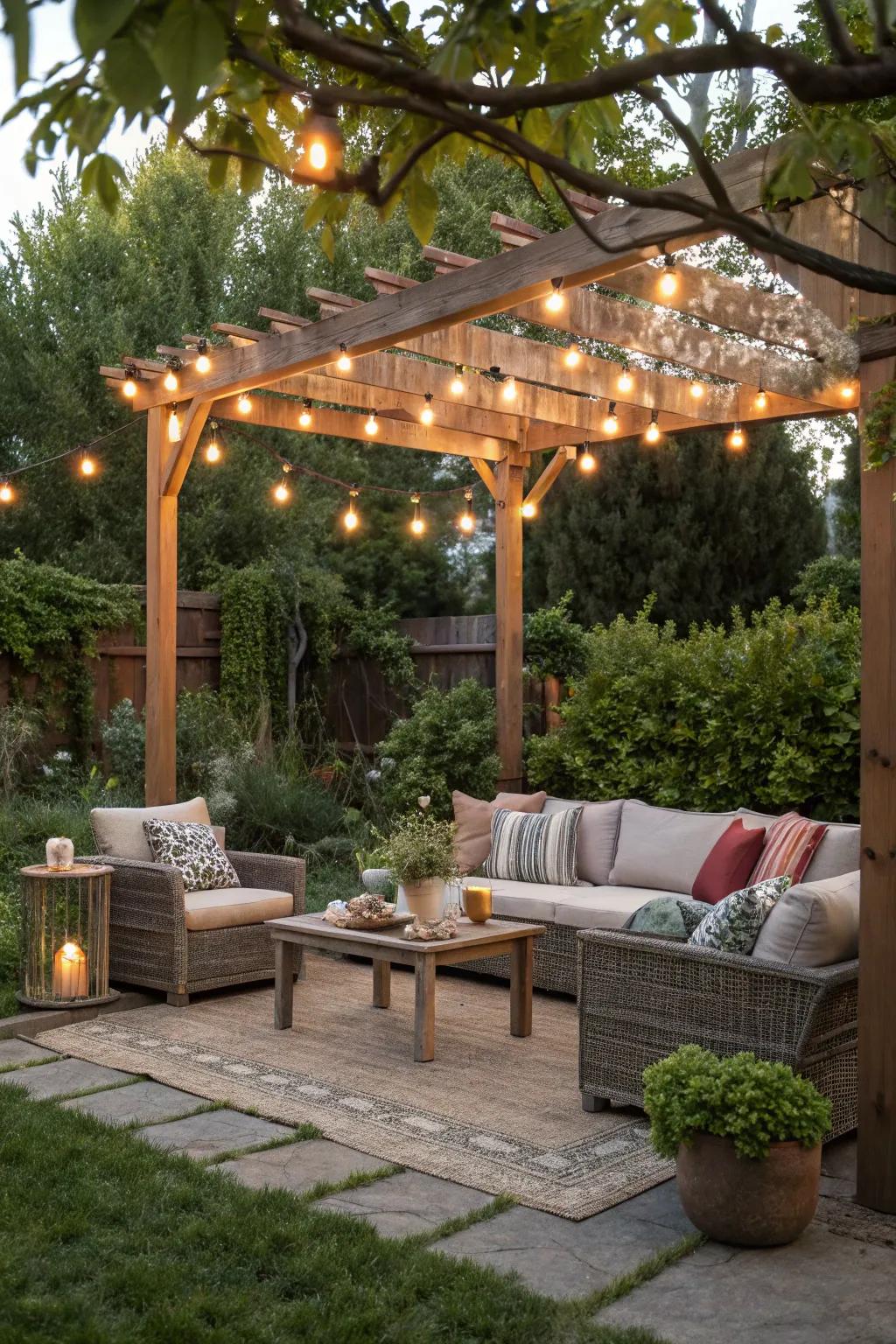
Set up an outdoor living area for entertaining. I love hosting friends in my garden with comfy seating and ambient lighting.
Products that could assist:
- Outdoor Patio Sofa Set: Elevate comfort with stylish patio furniture perfect for hosting friends in your outdoor space.
- String Lights for Patio: Transform your garden with enchanting string lights, creating a warm ambiance for evening gatherings.
- Weatherproof Outdoor Rug: Enhance your outdoor area with a weatherproof rug, adding style and comfort underfoot.
